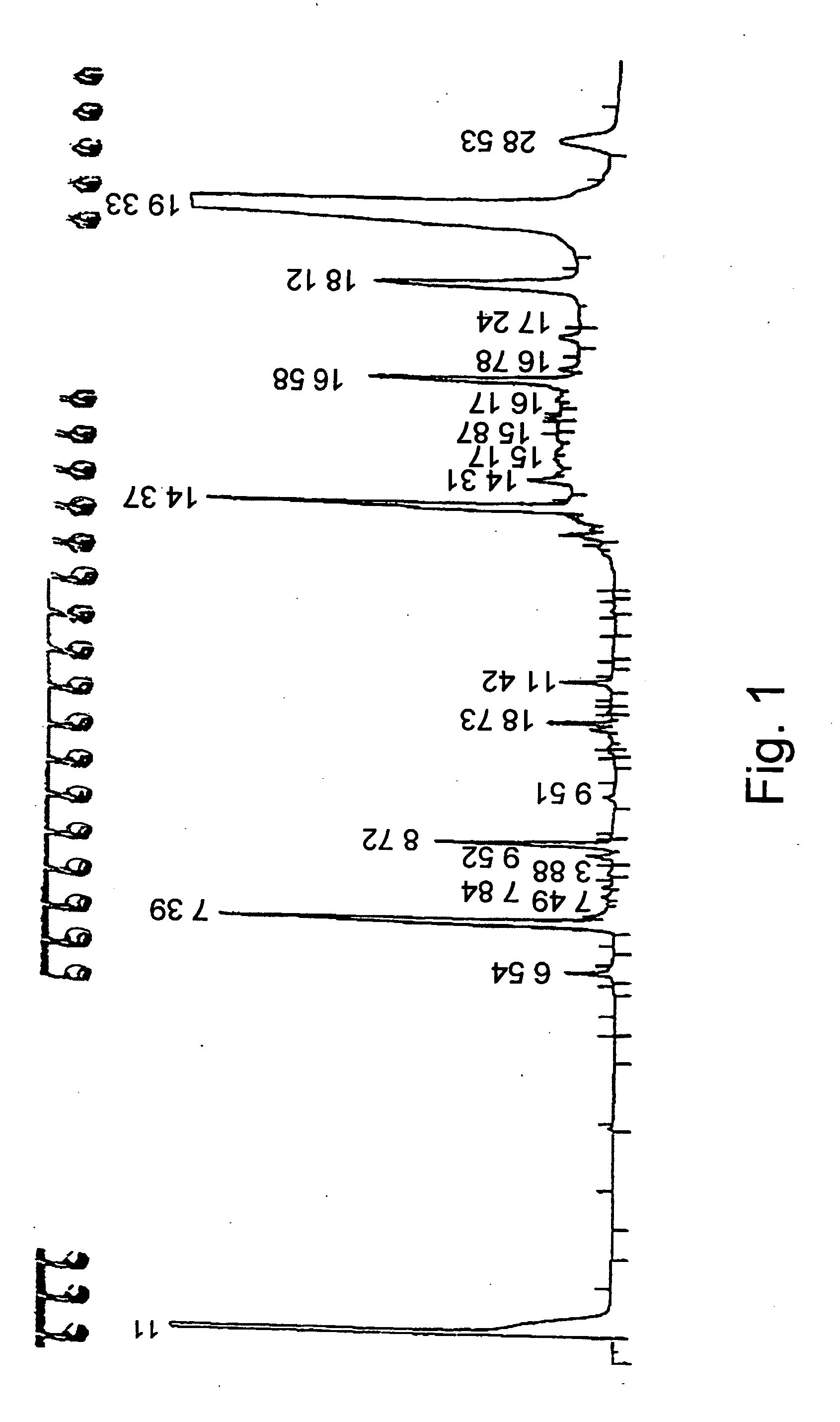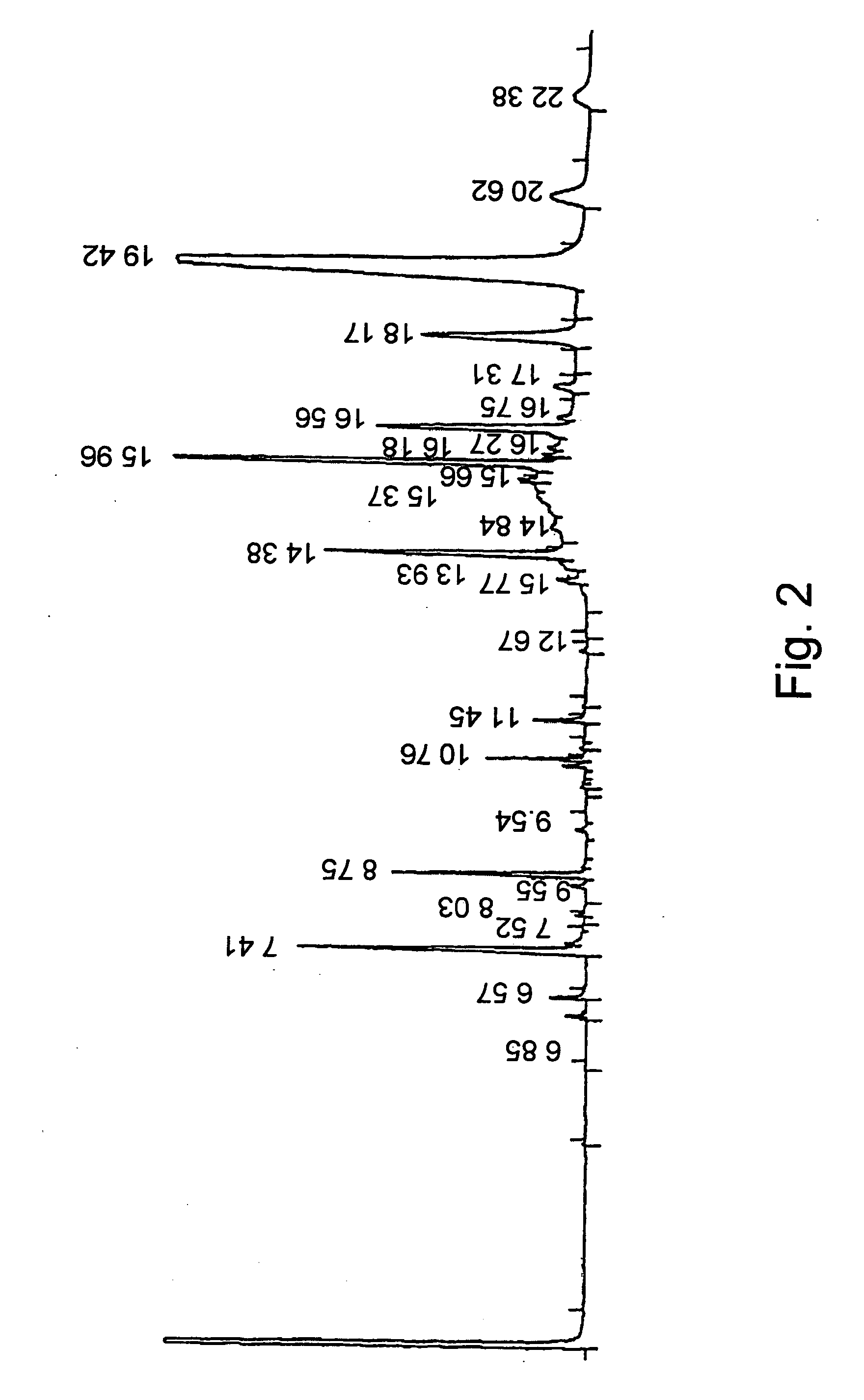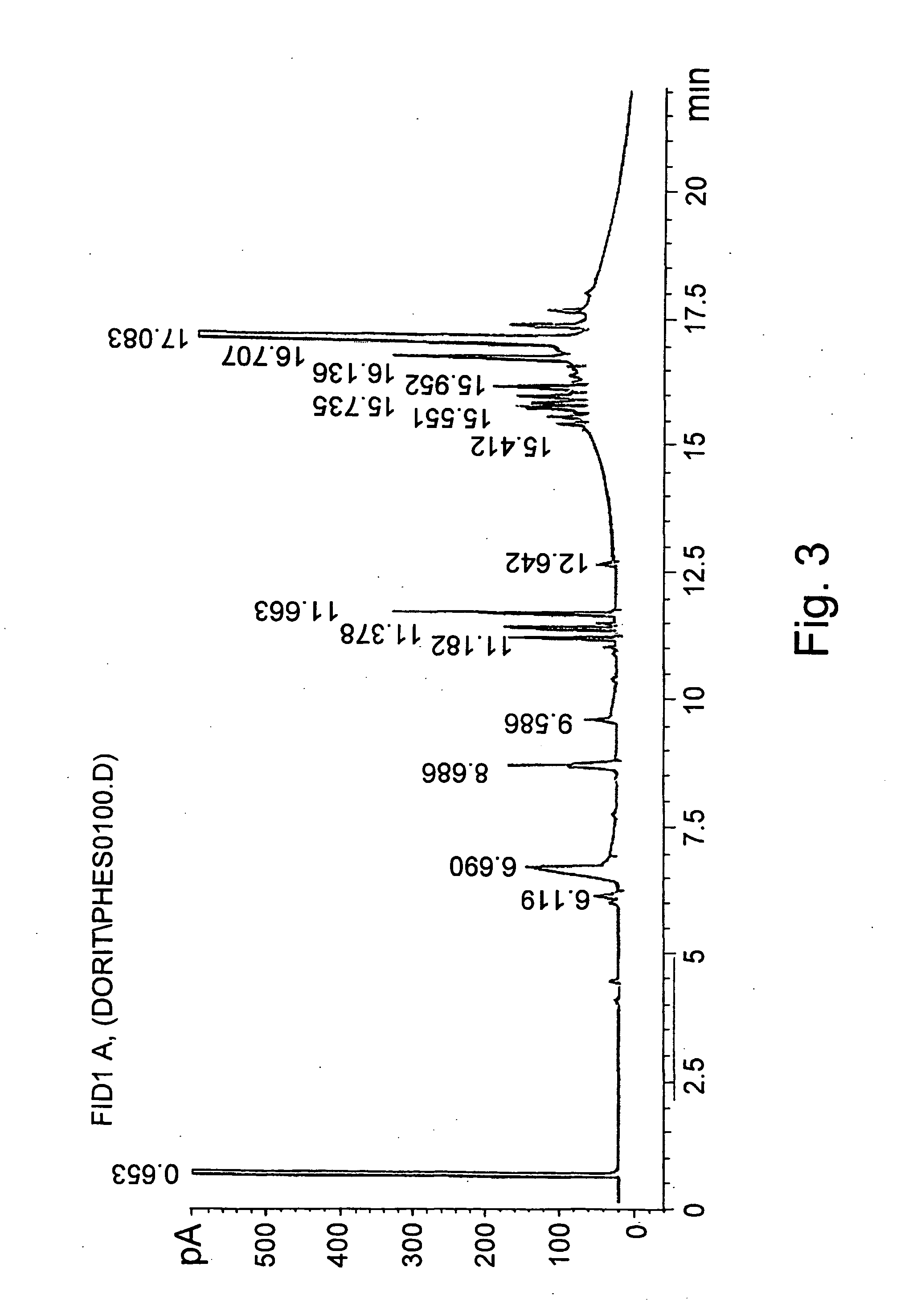Fractionation of phytosterol esters in oil
- Summary
- Abstract
- Description
- Claims
- Application Information
AI Technical Summary
Benefits of technology
Problems solved by technology
Method used
Image
Examples
example 1
Lipase-Catalyzed Alcoholysis of Stigmasterol in Canola Oil
1.1 Enzymatic Reaction
The lipase-catalyzed conversion of stigma sterol to stigma sterol ester in canola oil was performed using the following reaction conditions:
9 g of a lipase preparation obtained according to WO 01 / 75083 were added to 50 ml canola oil enriched with 4 gr stigmasterol. The reaction mixture was then heated to 60° C. for 14 hours. Following this period, samples were taken, diluted with n-hexane (30 μl reaction mixture / 600 μl n-hexane) and injected into a gas chromatography system, as described above. The concentration of unreacted stigmasterol was determined according to GC and conversion was calculated as 94%.
1.2 Separation of the Reaction Products
At the end of the reaction the enzyme was filtered and the mixture was cooled to 25° C. and left for 12 hrs.
The obtained mixture (herein referred to as Mixture A) has two distinct separated phases / fractions: an oil phase / fraction and a spread (paste-like...
example 2
Lipase-Catalyzed Alcoholysis of Phytosterols from Soybean Source in Olive Oil
2.1 The Enzymatic Reaction
100 g of a lipase preparation obtained according to WO 01 / 75083 and 120 g of phytosterols from soybean source (containing 0.3-4% Brassicasterol, 20-30% Campasterol; 11-20% Stigmasterol; >40% Beta Sitosterol) were added to 450 g extra virgin olive oil in a 1 liter glass stirred reactor. The reaction mixture is then heated to 50° C. and stirred for 24 hours. Conversion of reaction was 93%. The catalyst is separated by filtration at 50° C. The filtered catalyst is added to a fresh mixture of 450 g extra virgin olive oil with 120 gr of unreacted phytosterols. The 2nd batch reaches 93% conversion after 24 hrs as well. Filtration of catalyst is repeated and 566 g of product (mixture A) are left at room temperature for 20 hrs.
Mixtures B and C are obtained by centrifugation of Mixture A for 15 minutes, at 7,500×g and 25° C.
Mixture B, the spread fraction, was of 164 gr weight, where...
example 3
Further Enrichment of Phytosterol Ester and Diglycerides by Molecular Distillation
A reaction mixture obtained from canola oil source containing: 13 wt % phytosterol esters, 20 wt % diglycerides, 0.1-1 wt % of free phytosterols and 5 wt % free fatty acids was fed to a molecular still (glass made, 2 inch diameter, lab unit). First pass was conducted at conditions enabling removal of free phytosterol and free fatty acids: 180-200° C. and 0.01-0.001 mbar. Residue of first pass was fed again under different conditions that enable a variety of distillate compositions, as shown in Tables 7 and 8. PSE designates phytosterol esters.
TABLE 7Distillate mass and phytosterol esters yield in the distillate fraction(0.001-0.005 mbar at different temperatures)Distillate mass / PSE mass in distillate / Temp (° C.)feed massPSE mass in feed2350.170.402400.230.582500.280.622650.530.95
In order to obtain above 90% of phytosterol esters in the distillate phase the necessary conditions were found to be: 26...
PUM
| Property | Measurement | Unit |
|---|---|---|
| Fraction | aaaaa | aaaaa |
| Percent by mass | aaaaa | aaaaa |
| Percent by mass | aaaaa | aaaaa |
Abstract
Description
Claims
Application Information
 Login to View More
Login to View More - R&D
- Intellectual Property
- Life Sciences
- Materials
- Tech Scout
- Unparalleled Data Quality
- Higher Quality Content
- 60% Fewer Hallucinations
Browse by: Latest US Patents, China's latest patents, Technical Efficacy Thesaurus, Application Domain, Technology Topic, Popular Technical Reports.
© 2025 PatSnap. All rights reserved.Legal|Privacy policy|Modern Slavery Act Transparency Statement|Sitemap|About US| Contact US: help@patsnap.com



